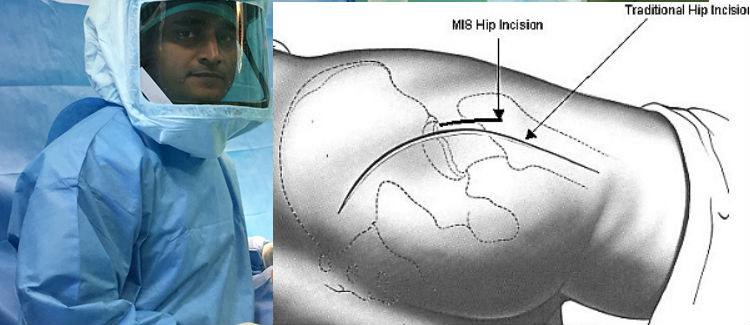Minimally Invasive HIP Replacement

Minimally invasive hip replacement surgery allows me to perform the hip replacement through one smaller incision.
Candidates for minimal incision procedures are typically thinner, younger, healthier, and more motivated to have a quick recovery compared with patients who undergo the traditional surgery.
Before I decide to offer a minimally invasive hip replacement, I get a thorough evaluation done of my patient. I discuss with him or her risks and benefits. Both traditional and minimally invasive hip replacement procedures are technically demanding. They require that the surgeon and operating team have considerable experience.
More Information
The artificial implants used for the minimally invasive hip replacement procedures are the same as those used for traditional hip replacement. Specially designed instruments are needed to prepare the socket and femur and to place the implants properly.
The surgical procedure is similar, but there is less soft-tissue dissection. A single minimally invasive hip incision may measure only 3 to 6 inches. It depends on the size of the patient and the difficulty of the procedure.
The incision is usually placed over the outside of the hip. The muscles and tendons are split or detached, but to a lesser extent than in the traditional hip replacement operation. They are routinely repaired after I place the implants. This encourages healing and helps prevent dislocation of the hip.
Reported benefits of less invasive hip replacement include:
- Less pain
- More cosmetic incisions
- Less muscle damage
- Rehabilitation is faster
- Hospital stays are shorter
For traditional hip replacement, hospital stays average 6 to 7 days. Many patients need extensive rehabilitation afterward. With less-invasive procedures, the hospital stay may be as short as 2 or 3 days. Some patients can go home the day of surgery


